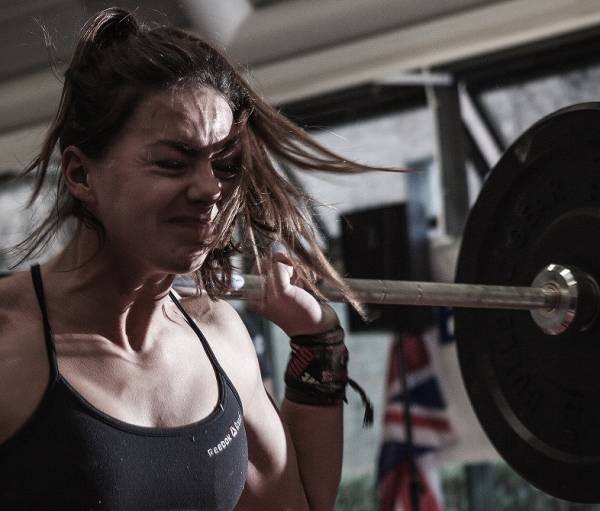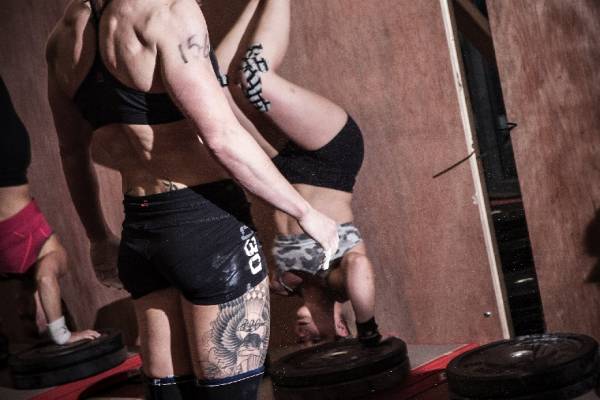If you’re reading this, you are most likely living a healthy, active lifestyle. You train, and you train smart. Maybe you do so to excel in your sport. Maybe you do it to improve your health. Or maybe you do it just to lead the best life you can.
Regardless of why you train, the simple reason you’re reading this is because you want to be better. You want to do better, move better, and feel better. You want more out of life.
What if I told you there was a way to do this? One that might surprise you and that you might not necessarily believe. The answer is near and dear to my heart. Have you guessed? Of course, it’s physical therapy.
Physical Therapy for Optimizing Your Movement
Trust me, I know what you’re thinking. You’re either thinking “I’m not hurt, so I don’t need physical therapy” or “I’ve been to a physical therapist before and they just put me on machines and gave me boring exercises.” Many of you know physical therapy as a reactive process. Somewhere you go when you get hurt, where you are put on machines, given boring exercises and stretches, and maybe a few minutes of hands-on therapy with a therapist. But the times are a-changin’.
The physical therapy profession is evolving. It now includes analyzing movement and predicting injury risk, determining areas of potential injury, addressing strength imbalances, and improving posture, performance, and health. Basically, optimizing your movement. Helping you feel better, even when you didn’t know it was possible to feel better. What could possibly be cooler than that?
But while the profession is changing, but that doesn’t mean everyone is changing with it. We are in a new age of physical therapy and a new age of health and fitness. As with any change, some people lead and some resist. It is up to you to be knowledgeable and informed so you can better yourself.
So, please, read on. I will show you just what this new age of physiotherapy looks like, and how it can benefit you, your body, and your performance.
Emphasis on Movement
Gone are the days where we look at muscles in isolation. As Thomas Myers, author of Anatomy Trains, once put it – we do not have 600 muscles, but instead we have one muscle in 600 pockets. These muscles do not work in isolation. They work together to create movement. And this is precisely why you can’t look at or train muscles in isolation.
It is also why we can’t rehabilitate muscles or joints in isolation following injury. An injury simply never happens in isolation. Research shows that localized muscle pain can actually change EMG activity in a muscle synergist where no pain is present. This means that non-painful synergist muscles undergo increased loads following injury in order to compensate for the muscles that have pain.
Even more, musculoskeletal problems are a lifestyle problem. As a society, we simply do not move enough. Most of us sit all day, and even those of us who workout often have to spend hours at a computer or in a car. This lifestyle changes our movement system. It creates muscle imbalances that affect how we move. It creates mobility restrictions, which mean we have to compensate elsewhere to maintain mobility and movement.
This is where physical therapy – especially the new age version – excels. Through optimizing movement to improve your health. And this is what you will see in the profession: a shift from boring exercises that isolate muscles to functional movements. Turkish get ups, loaded carries, dynamic planks, and dynamic full-body stretches. Exercises that improve alignment, stability, and mobility. Exercises that mimic what we do in daily life.
Regular Check-Ins for Prevention of Injury
Physical therapists have a unique set of skills when it comes to preventative medicine. Movement is crucial for our health, but it also tells us so much. It can tell us if there is a dysfunction through pain, imbalance, instability, or mobility restrictions. When we look at movement, we can see if further assessment is required to pinpoint a potential problem, potential source of injury, or source of pain.
Movement can hurt us if it is done incorrectly, but correcting the dysfunction can prevent pain and injury from ever occurring. I want you to think about our oral health for a minute. Most of us go to the dentist on a regular basis for a check-up. This makes perfect sense. Why have a tooth pulled when you can prevent the cavity to begin with?

Our musculoskeletal health should be no different. We have the means and the skills to monitor our musculoskeletal health to make sure we are moving efficiently, without major compensations, imbalances, or restrictions. Traditionally physical therapy is thought to be reactive. You get hurt, you have pain, and you seek help. But why wait for the injury to occur when you can prevent it from happening?
This is the new age of physical therapy. No longer should you feel as though you must be injured to work with a therapist. Instead, regular check-ins should and will become the norm. To prevent injury. To move better, perform better, and feel better even when you didn’t know you could.
Death of Modalities
When I see clients for the first time who have been to physical therapy before, they are usually pretty shocked that I don’t put them on a machine. They are used to having a heat or ice pack put on them for fifteen minutes, followed by ultrasound or electrical stim for another ten to twenty minutes. Manual work is usually limited, and typically the therapist is seeing three or four people at one given time.
But these modalities are not as beneficial as once thought. Sure, there may be times when they are necessary, but they do not need to be, nor should they be, the bulk of your treatment. I almost never use these modalities. Instead, I focus on hands-on, manual therapy and exercise.
And you know what? I’ve found my clients get better in less time, experience less pain, become better aware of their body, and are more excited to improve their movement and prevent future injury. So, if you work with a therapist who only uses machines and doesn’t include functional exercises and hands-on treatment, you’re not experiencing the new age of physiotherapy.
Collaboration in All Things Fitness
The most successful athletes I see, the most successful people in all of their fitness endeavors, are the ones who work with a team of people. A team who collaborates and communicates with each other. Strength coaches, personal trainers and physical therapists, working together.

You see, each brings something to the table to help you become your absolute best. Screening your movement and determining if you have any muscle imbalances not only helps you prevent injury from occurring, but it also helps you bust through that fitness plateau. It helps you set a personal record on your bench press. It helps you with your fat loss goals.
And this is the new age of physical therapy. Therapists no longer work independently, but have a network of professionals around them. Strength coaches and personal trainers with whom they collaborate, each helping the other improve the care and outcomes of their clients.
The Take-Away on Physical Therapy
I hope in reading this you’ve realized just how important our musculoskeletal health and movement is when it comes to our overall health. And I hope you feel more educated in what physical therapy is, or at least what it is evolving to be.
It’s time you take your health and fitness into your own hands. Prevent future injury. Monitor your movement system. Work with professionals. Your body will thank you, both now and in the future.
References
1. A Ciubotariu, L. Arendt-Nielson, T. Graven-Nielson, “The influence of muscle pain and fatigue on the activity of synergistic muscles of the leg.” Eur J Appl Physio 91 (2004): 604-614.
2. Nancy Shute, “Farewell to the heating pad: physical therapists say it doesn’t help.” Accessed October 9, 2014.
3. S. Kumar, “Physical therapy: past, present and future- a paradigm shift.” Journal of Phyiscal Therapy 1 (2001): 58-67.
Photos courtesy of Savannah Wishart.






